Sgt Matiu Ratana: How did Louis De Zoysa shoot London custody officer?
- Published
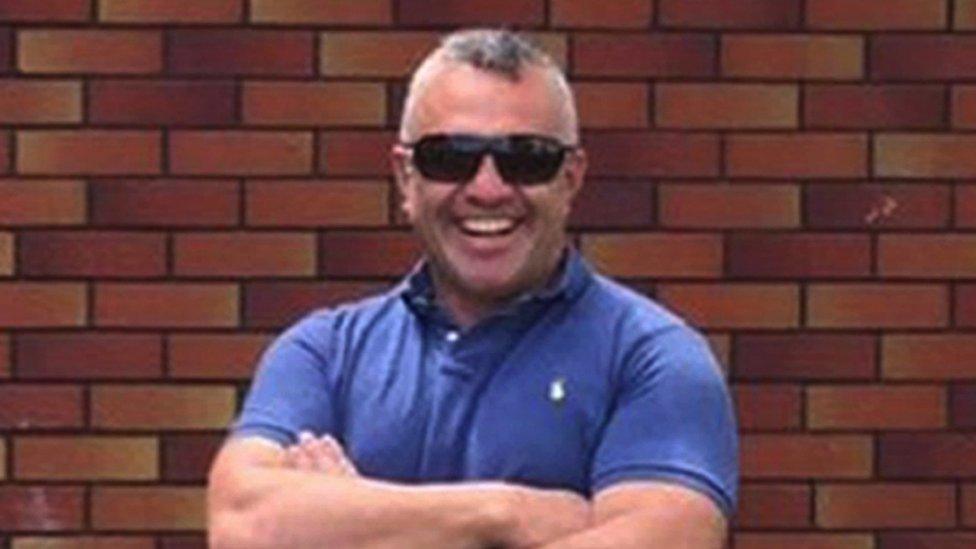
Matt Ratana was three months from retirement when he was killed
In the early hours of 25 September 2020 Sgt Matiu Ratana was in charge at Croydon Custody Centre. It would be his last shift. He was shot and killed by a handcuffed prisoner just three months before he had been due to retire.
At about midnight, 23-year-old Louis De Zoysa left the flat he had rented on a farm on the edge of London.
In a holster hidden under his left arm he was carrying an antique Colt revolver which was legal at the time because of the obsolete .41 calibre bullets it takes. He had made his own ammunition.
Each of the six chambers of the revolver had a bullet in. He was carrying seven more bullets in a black pouch in his breast pocket.
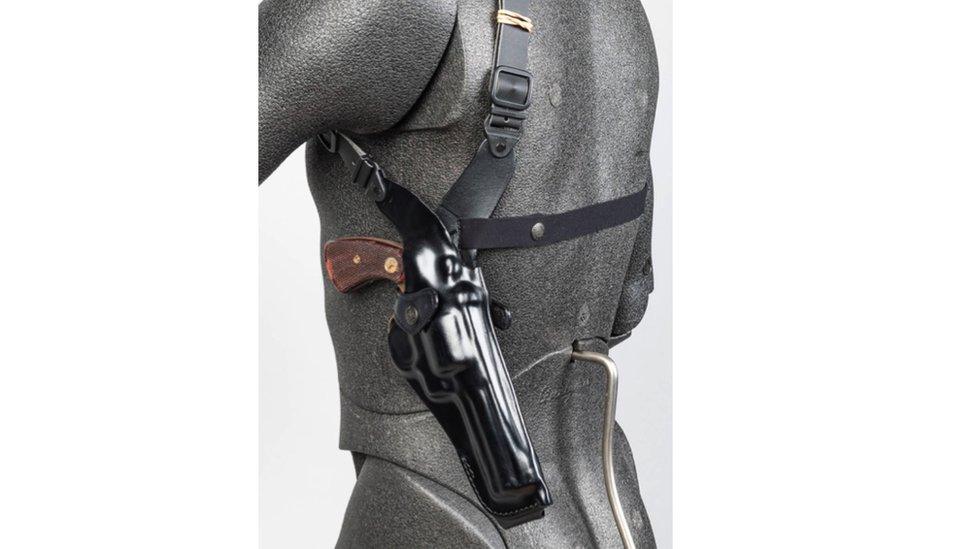
A police image showing how the revolver was being carried by Louis De Zoysa
It is not clear why he was walking the streets near his parents house with a loaded gun. One theory is that he was there to confront his father, who has convictions for domestic violence and once broke De Zoysa's foot with a bed slat.
At just after 01:30 BST, PC Rich Davey and PC Samantha Still saw Louis De Zoysa walking along London Road in Norbury in south London with a small brown duffle bag, and decided to stop him.
Realising he was going to be searched, De Zoysa told the officers he was carrying 3g of cannabis. He was handcuffed and PC Davey found the bullets.
The two officers checked De Zoysa's bag, his waistband and frisked his legs, but somehow they missed the gun in the holster under his arm. They did not have a metal detector with them in the police car.
He was taken to Croydon Custody Centre in the back of a police van. Detectives believe that it was during the journey that De Zoysa moved the gun from the holster to his hands, still cuffed behind his back. There was no metal detector at the entrance to the custody area.
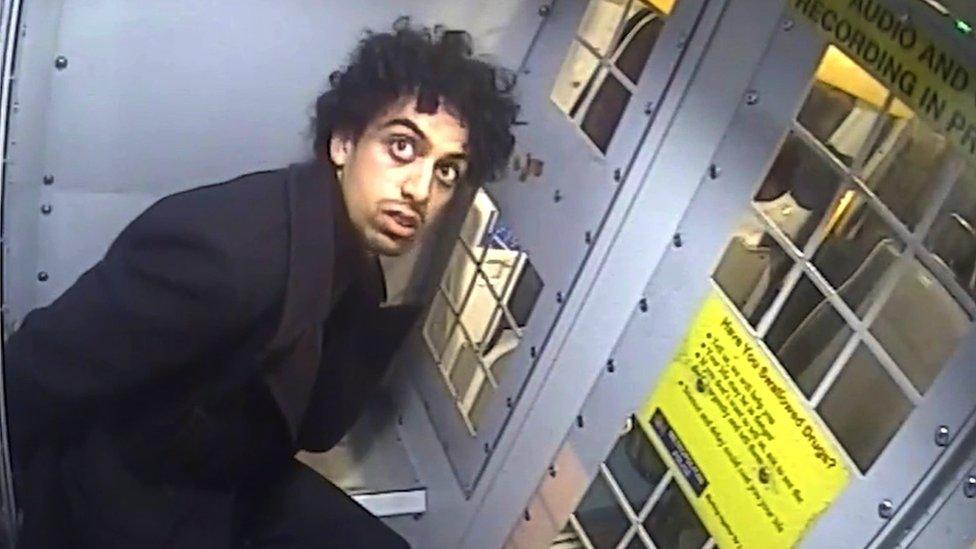
Detectives think De Zoysa moved the gun from the holster while he was in the police van
Once De Zoysa was in the custody suite, Sgt Ratana, who was known as Matt, took control.
When he heard about the discovery of bullets, he said: "So, you're probably going to need a further search."
He handed a metal detector wand to PC Davey and instructed: "Just wand him down but don't take the cuffs off."
De Zoysa became uncompliant, muttering to PCs Davey and Still: "Please leave, please leave."
As PC Davey pulled him to his feet, De Zoysa brought his still-cuffed hands from behind his back and shot Sgt Ratana in the heart.

Although still handcuffed to the rear, Louis De Zoysa managed to bring the revolver round to his side and open fire
A second shot hit the custody sergeant's leg and a third went into the cell wall. There followed a struggle of about 15 seconds, as PCs Davey and Still leapt on De Zoysa.
A fourth shot went into the prisoner's neck.
De Zoysa had hypermobility which gave him unusual flexibility in his joints, and, at some point during the journey to the custody centre, he had managed to move the gun from the holster into his hands and keep it concealed behind his back.
Search 'not done right'
Sgt Ratana was born in New Zealand to a Maori father and a mother who had emigrated from Scotland. The family was not wealthy, but he did well at school, excelling at sport and becoming a prefect.
His brother, James Young, remembers their mother encouraging them to watch British TV shows like the 1970s crime series The Professionals, and sporting events like the FA Cup final.
"He went to America to Atlanta State University to do a tennis scholarship," Mr Young said. "We thought he was going to be a tennis champ and win US Opens, but nah he didn't. He went and became a cop."
In 1991, aged in his early 20s, Matt Ratana moved to London and joined the Metropolitan Police. He married and had a son.
Back in New Zealand his brother had been living a life of crime and became familiar with police station procedures. He cannot believe that London police did not detect the gun.
"What they've told us," he said, "is they've changed the procedures and all these sorts of things; they've got metal detectors when you walk in through now. I'm like, well, they've got those in the police stations here. They've had them for years.
"In New Zealand, for a fact, what he had on him if he was here in New Zealand, they would have found that. Because I've been through that situation. I've been through police stations where they searched the suspect. It was not done right."
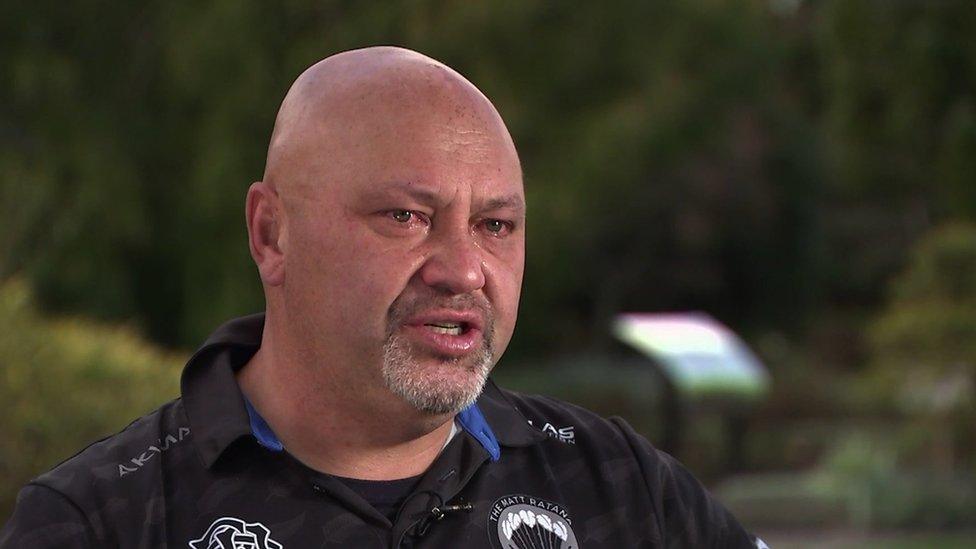
Matt Ratana's brother James Young said the search of Louis De Zoysa "was not done right"
An investigation by the Independent Office for Police Conduct (IOPC) found that PCs Rich Davey and Samantha Still should not face any disciplinary proceedings.
Following the conclusion of its investigation, in June 2021, the IOPC said it recommended that the National Police Chiefs' Council (NPCC) consider the introduction of handheld metal detectors in all response vehicles and vehicles used to transport detained people, a suggestion it said had been accepted by the NPCC.
IOPC director of operations Amanda Rowe said: "Although the officers searching De Zoysa did not strictly follow [Met Police Service] training - which requires that the torso is divided into quarters, and each quarter is searched from the top down, both back and front - we concluded that neither their actions nor omissions breached the police standards of professional behaviour.
"However, we suggested one officer could benefit from some further training around body searches and transportation of detainees, and the second officer around body searches and their role in assisting the other officer."
Met Police Deputy Assistant Commissioner Stuart Cundy said: "The officers, once they searched him on the street, Louis De Zoysa always remained in handcuffs. When the ammunition was found on him the handcuffs were moved from a front position to a back position."
He praised their bravery once the shooting started.
"The two arresting officers, I think without any thought, instinctively jumped on De Zoysa to try and wrestle the firearm away and get it off him," he said.
He said all frontline officers in the Metropolitan Police would now have metal detectors in their cars. He also said the force was trialling an airport-style body-scanner for use at custody suites.
Motive unknown
De Zoysa was diagnosed at an early age with autistic spectrum disorder (ASD), but had done well at school and had learnt to shoot in the army cadets.
Because of his self-inflicted injuries he had a stroke and surgeons removed a section of his skull to relieve pressure on his brain.
For months he was unable to walk or talk. Now, he mostly uses a wheelchair and can talk using single words or short phrases.
The Crown Prosecution Service decided he was well enough to be charged with murder. His lawyers tried to argue he was unfit to be tried, as he can no longer communicate properly, but the judge disagreed.
The whole language of the trial was simplified to help Louis De Zoysa understand. When he gave evidence he was mostly asked questions requiring a yes or no answer.
It is still unclear why De Zoysa was carrying a gun that night, or why he concealed it during the search on the street and then decided to open fire on Sgt Ratana.
His lawyers argued that he should be found guilty of manslaughter due to diminished responsibility as he may have suffered an autistic meltdown that night. However, the jury found him guilty of murder.
Mr Young said his brother's death had inspired him to try to lead a better life.
"I'm not an angel", he said. "I am a fallen angel. My brother was an angel. So I'm here on earth to get up there with him."

Follow BBC London on Facebook, external, Twitter , externaland Instagram, external. Send your story ideas to hellobbclondon@bbc.co.uk, external
- Published13 June 2023
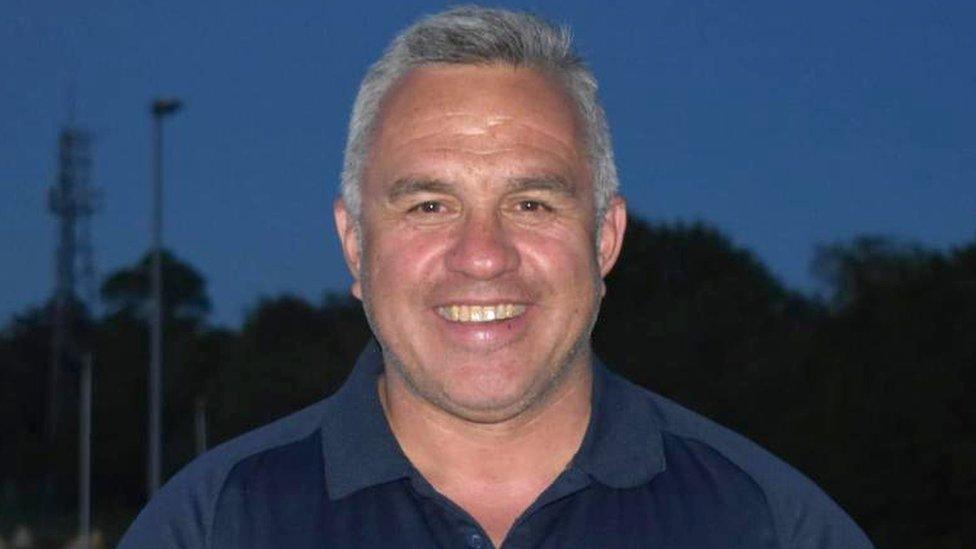
- Published15 June 2023

- Published16 June 2023

- Published14 June 2023

